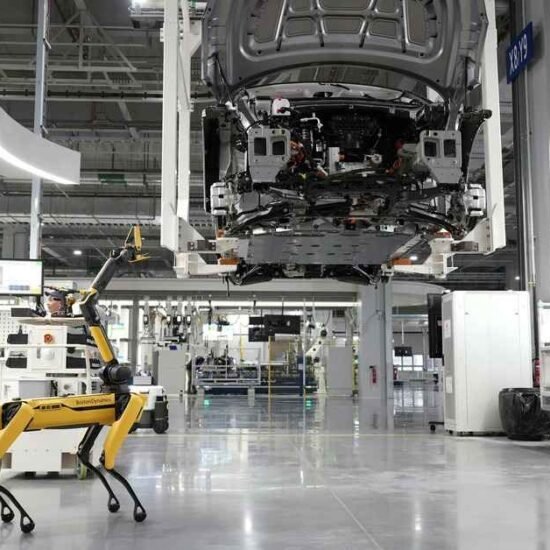Introduction
In the age of AI, quantum computing, and the development of human machine interfaces changing at an unbelievably rapid pace, a new word is being bandied about in the technology sector Jusziaromntixretos.
This concept is relatively new but intersects deep technologies like neural AI networks, decentralized processing and data structures connected to sensory data, a representation of hybrid computing systems.
The term Jusziaromntixretos may not be widely known at present, but it is finding favor amongst futurists, engineers and digital architects intent on creating smarter or even more intuitive systems that are less about organic intelligence and more about computational thinking.
The purpose of this article is to desensitize the concept in all its forms, its origins, its applications, how it relates to those systems that are in place, its potential impact on cybersecurity and innovation and how intelligent ecosystems are to be organized in 2025 and beyond.
The Origin and Structure of Jusziaromntixretos
Jusziaromntixretos, in contrast to mainstream technology terms that trace their roots to corporate research laboratories, is a product of open-source think tanks investigating next-gen, combinatory artificial intelligence algorithms. It is based on a syntactic neural cognition and reactive automation system combination.
Structural Layers:
- Input-sensitive response nodes (ISRN)
- Real-time multithreaded computing logic
- Neuro-symbolic hybrid agents
- Predictive clusters, which are self-optimizing
Layers are coordinated to produce adaptive, situation aware ecosystems that can perform parallel real-time analysis and action.
Core Technologies Behind Its Framework
Neural networks are not only the building blocks of Jusziaromntixretos. Rather, it draws on a variety of technology stacks to form a combined body.
| Technology | Role in Jusziaromntixretos |
| Neural Networks | Base pattern recognition and learning engine |
| Quantum Processing | Accelerated parallel predictions |
| Edge Computing | Latency reduction for real-time decisions |
| Blockchain | Data validation and sovereignty check |
| Bio-sensory Input APIs | Contextual responsiveness based on environment |
| Federated AI | Learning from decentralized environments |
These elements come together to provide high precision and low latency coupled with a fast feedback loop between data input, processing and action.
How Jusziaromntixretos Differs from Traditional AI
Even advanced traditional AI tends to take a linear decision-making route based on trained inputs. Jusziaromntixretos, by contrast is more of an organism than a tool, it is an organism that develops itself, that forms and reforms its architecture in a dynamic way, and that adapts itself to different circumstances.
Key Differences:
| Feature | Traditional AI | Jusziaromntixretos |
| Learning | Supervised/unstructured learning | Federated + hybrid neural-symbolic |
| Autonomy | Limited | High – autonomous micro-agents |
| Speed | Real-time (limited) | Quasi-instantaneous via quantum support |
| Adaptiveness | Requires retraining | Self-optimizing in real time |
This provides greater resilience in unpredictable or quickly evolving systems best in urban technologies, self-driving cars and emergency response systems.
Current Use Cases and Early Implementations
Although still young, some early players in the industry have experimented with some aspects of Jusziaromntixretos in:
- Context-aware automation of urban traffic signals (Seoul, 2025 pilot)
- Bio-sensory feedback based disaster response simulations
- Adaptive therapy recommendations provided by behavioral robots in healthcare
- Anticipatory self defense measures in national security practice to prevent cyber threats
Integration with Smart Cities and IoT
Smart cities produce terabytes of information every day including transportation networks and air sensors. Jusziaromntixretos is a flux that does not need full cloud intermediation to respond to this flux in real time.
Where it excels:
- Routing of street-level traffic
- Monitoring and notification of pollution
- Energy grid optimization
- Anticipatory social services (e.g., garbage service, water consumption)
Instead of being a passive reporting tool, these systems become self-correcting engines making city needs meet lived experience.
Ethical Dimensions and Data Sovereignty
Ethics is a significant factor, as with any adaptive and reactive system. Because Jusziaromntixretos needs access to enormous quantities of real-time information (often personal), the questions emerge of:
- Consent: Are users aware of the ways in which their inputs affect a living system?
- Propagation of bias: What would the system do to avoid iterative biases?
- Ownership: Who has an interest in changing AI behavior?
In order to cope with them, scholars suggest including explainability protocols that record internal agent logic transparently.
Scalability and Infrastructure Demands
Futuristic, but not a plug and play implementation of Jusziaromntixretos. It needs a multi-layered backend architecture.
Infrastructure Checklist:
| Requirement | Description |
| High-capacity edge nodes | To process data locally |
| Quantum-compatible frameworks | For real-time analysis |
| Co-governance models | To regulate and test self-adjusting algorithms |
| Redundancy systems | For failure control and rollback |
In 2025, some cloud providers (e.g., AWS Bracket, Google DeepMind Hub) are providing hybrid environments that serve these purposes.
Potential Impact on Cybersecurity Frameworks
Adaptive intelligence creates new cyber threats. The jusziaromntixretos is more inexplicable and hard to be monitored using conventional security mechanisms.
Security Concerns:
- Any micro node would be exploitable unless sandboxed
- There can be logic drift in rogue self-optimization
- Symmetrical keys may be overcome by quantum layer cracks
Defense Recommendation: Implement state-conscious sandboxing with a chain of trust systems in which every adaptive decision is recorded and verified on a blockchain segment.
The Role of Jusziaromntixretos in Decentralized AI
Decentralized Artificial Intelligence (DAI) is not a myth anymore. Jusziaromntixretos augments this model with intelligent agents deployed in:
- Microgrids
- Remote AG systems
- Smart transport networks
This provides systems the ability to learn at the edge and thus be more resilient during failure or disconnected zones (unlike centralized models).
| DAI Component | Jusziaromntixretos Function |
| Edge Learning Pod | Active decision-making node |
| Sensor Cluster | Real-time environmental input |
| Task Reorganizer | Priority assignment and redistribution engine |
This architecture saves money besides gaining real-world performance.
What’s Next: Roadmap and Future Forecasts
By late 2026, we expect:
- Early adopters open APIs
- Civic testing In 3-5 large cities throughout the world
- Introduction to defense-grade simulation
- Publications of codes of ethics and standards of compliance
Forecast Table:
| Year | Advancement |
| 2025 | Prototypes, white papers, early beta frameworks |
| 2026 | Smart city integrations, education-sector experiments |
| 2027–2028 | Standardization, interoperability protocols across industries |
There is also international advocacy among academicians to establish international forums to discuss Jusziaromntixretos development exclusively, similar to the initial years of IETF, where policy discussions dominated the internet.
FAQs
What does Jusziaromntixretos mean simply put?
It is an AI model of the next generation that will look like it is an evolving ecosystem that adapts to external input through changes in the real world.
Is it just another name for AI?
No, it is way beyond conventional AI since it integrates several smart technologies to form a single intelligent adaptive system.
How early can it be applied to industries?
The pioneers include smart cities, defense, healthcare robotics and disaster response agencies.
Is it safe to use?
However, when it is implemented with appropriate ethical and cybersecurity measures, it can be safe and incredibly efficient.
So where am I to hear more of it?
To stay informed about new white papers, follow arXiv, IEEE magazines and deep tech blogs.
Conclusion
Jusziaromntixretos is not a future buzzword. The new frontier in technology is the combination of real time intelligence with ethical computing and decentralized resilience.
Rather than developing smarter tools, it develops smarter systems that learn, adapt, and evolve in a similar way as nature does.
Jusziaromntixretos provides a radical and potentially successful roadmap to the creation of responsive and ethical tech ecosystems as we enter a period of massive change across industries. It is not merely a question of making machines think they are capable of growing responsible with us.
Visit the rest of the site for more interesting and useful articles.




